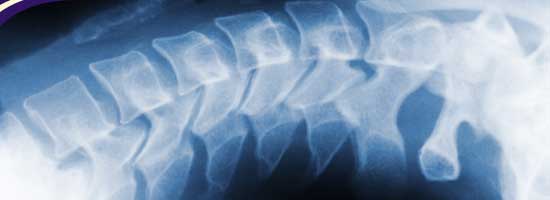Has a whiplash injury left you in pain?
The syndrome of whiplash was first described in litigation in 1928. Since that time whiplash has had an unsavory reputation. Many researchers and doctors avoided involvement with whiplash injuries and opinions varied.
that time whiplash has had an unsavory reputation. Many researchers and doctors avoided involvement with whiplash injuries and opinions varied.
Over time, it became clear that complaints of patients sustaining this type of injury were, in fact, fairly consistent. The most common complaint, neck pain, could easily be understood, but other symptoms, such as ringing in the ears, dizziness, blurred vision, headaches, numbness, and back pain, were not so easily explained clinically.
According to research statistics, nearly one-third of all motor vehicle accidents are rear-end collisions. Newton’s first law of motion states that “an object continues either at rest or in a state of motion in a straight line, unless it is acted upon by an external force”. When a vehicle stopped at a red light is hit, the car is moved forward by the external force of the impacting vehicle. This force pushes the seat and driver forward. The neck, which is not in contact with the seat, remains stationary, causing hyperextension of the neck. When the front vehicle stops, the driver is thrown forward.
Although the shoulder harness prevents the driver from hitting the steering wheel or windshield, it forces the head to fly forward in a twisting motion, causing hyper flexion of the neck. Most injuries are a result of hyperextension, when the neck can exceed the maximum physiologic extension of 70 degrees by as much as 120 degrees, stretching some muscles as much as 30%.
The forces exerted on the head and neck with rear-end collisions can be quite high. For example, one G is the force exerted by the earth’s gravity which causes an object to fall at 32 feet per second. Pilots begin to pass out at 6 Gs, and at 8 Gs you are pinned to your seat. If a 150-pound person is subjected to 10 Gs, this is a force of 1,500 pounds. In crash testing, with impacts below 10 mph, the head can be subjected to 10 to 15 Gs for 100 milliseconds.
If the average head weighs 12 pounds, then it becomes a weight of 120-180 pounds. Talk about a headache!
Research involved with the actual injuries sustained by victims of whiplash show tearing of muscles, ligaments, vertebral disc derangement, tears in the ligamentous capsules surrounding the joints, damage to the sympathetic nervous system and peripheral nervous system, occult fractures, mild concussions, and micro-hemorrhages of the brain tissue and spinal cord, as well as stress disorders.
Many of these injuries are imperceptible on MRIs, CT scans, and x-rays. The symptoms range from muscle pain, headaches, jaw pain, vertigo, nausea, visual problems, forgetfulness, and unexplained numbness in the arms and legs, etc.
Symptoms may not present themselves for hours, days, months, or even years after the accident. Scientific evidence supports these characteristic of whiplash injuries. Other studies show that neck pain presents in 65% of patients within 6 hours of the accident, 28% within 24 hours, and 7% within 72 hours, though those people suffering symptoms immediately after the accident are more likely to continue to show symptoms more than 2 years following the initial injury.
People who have pre-existing conditions such as arthritis, and women due to their smaller frame and less muscle density than men, are more likely to be injured, though the speed and size of the vehicles involved, as well as the position of the seat and other factors play a significant role in determining the severity of an injury. Government reports revealed over one million injuries from rear-end collisions in 1990, and estimates project that over 25 years the prevalence of chronic pain from whiplash is more than 9% of the total U.S. population.
To lessen your risk of serious injury, wear your seatbelt, sit up in your seat with your seat in the upright position, and stop thinking of your head restraint as a headrest. The majority of people have their head restraint improperly positioned. Correctly adjusted, your restraint should be about even with eye level, and with no more than a two-inch gap between the restraint and your head.
If you are in an accident, even what appears to be a minor one, after life-threatening injuries have been ruled out, follow-up with a physician who specializes in soft-tissue trauma.
Remember, prevention is always best… drive safely, and watch out for the car behind you.

Hearriari said,
Thank you!
Chiropractor Back Blog » Has a whiplash injury left you in pain? » Ocala Chiropractic said,
[…] unknown posted a noteworthy aricle today onHere’s a small snippetThe most common complaint, neck pain, could easily be understood, but other symptoms, such as ringing in the ears, dizziness, blurred vision, headaches, numbness, and back pain, were not so easily explained clinically. … […]
zemsearce said,
great domain name for blog like this)))
————————
ad: http://pedeno.ru/
Bluelotrels said,
great domain name for blog like this)))
————————
sponsored link: http://werato.ru/
Eraseryenlarf said,
cool sitename man)))
————————
sponsor: http://auto-car-loan.xetisa.ru/
Attemeheipino said,
Hello, I can’t understand how to add your blog in my rss reader
————————
signature: http://joneri.ru/
Kelly Brown said,
The best information i have found exactly here. Keep going Thank you
GarykPatton said,
Hello, can you please post some more information on this topic? I would like to read more.
CrisBetewsky said,
It’s a pity that people don’t realize the importance of this information. Thanks for posing it.
Add A Comment